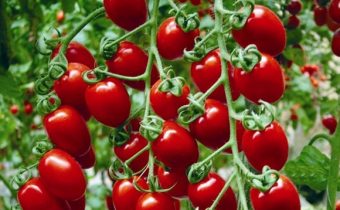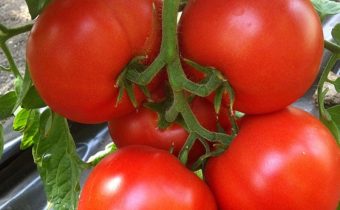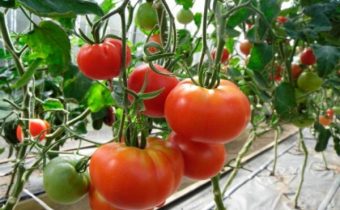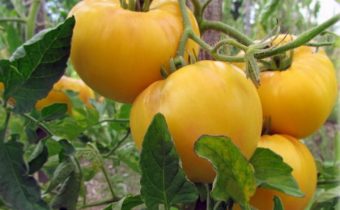The best varieties of tomatoes for long-term fresh storage
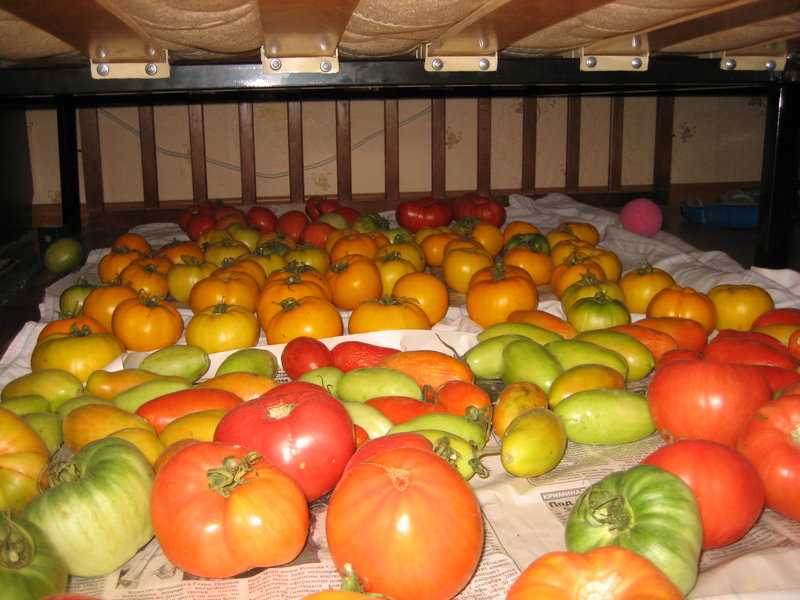
In cold regions, in order to harvest ripe tomatoes, they have to be planted in a greenhouse. But what if the site is small or located on a slope where a large structure cannot be erected. In this case, you need to plant tomatoes that ripen well at home, lie for a long time and do not lose their taste. Such varieties will appeal to not only the northerners, because who refuses in the winter to enjoy fragrant, tasty tomatoes from their own garden. Top Grades tomatoes for long-term fresh storage: characteristics, description, advantages and disadvantages.
Peculiarities of dead tomatoes and storage conditions
The secret of tomato varieties suitable for long-term storage is simple - they all have the “Rin” gene, which slows down the ripening process and slows down the metabolism in fruits, the flesh remains dense for a long time, but does not become dry. Such varieties are resistant to temperature fluctuations (day and night), as well as humidity, the fruits do not crack, retain taste and shape for 12-24 weeks. Even the lying tomatoes need to be properly cut and stored.
Tomatoes grown in unprotected soil, lie longer than greenhouses or greenhouse.
The harvest will lie for a long time, if it is carried out in the fall, when the air temperature has fallen below + 5 ° С. Tomatoes can not be washed, very dirty enough to wipe with a soft cloth, trying not to spoil the skin. Fruits should be sorted by size and degree of ripening, put each batch in boxes (2 or 3 layers, sawdust between them). The room should be dark, the tomatoes in breast maturity last longer at + 8–10 ° C, in brown or pink - from +4 to 6 ° C. Humidity should not exceed 80%.
Popular tozhi varieties of tomatoes
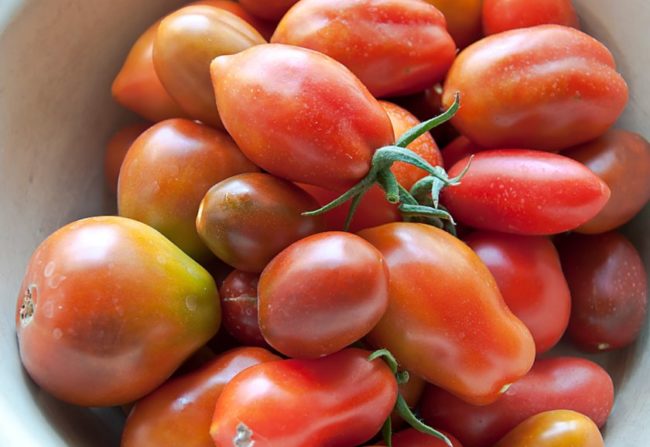
When self-selection of options, you should pay attention to varieties with medium-sized fruits, a small number of chambers, dense skin and flesh. Large specimens are not stored for long, and small ones after maturation become tasteless. Good reviews give varieties such as Roman striped, Korean long-fruited, Bella Rosa, Golden Andromeda, Pink spam, Banana legs, German orange strawberries, Rosemary pound, Honey drop and Kumato.
Top 10 sunflower varieties and hybrids of tomatoes:
- Long Keeper. Late-seasoned, determinant. Harvest well stored until early January. Fruits are dense, flat-round, orange, not larger than 150 g. Cons - tomatoes rarely ripen on the bushes, pluses - yield, good taste.
- New Year. Indeterminate, mid-season variety. Harvest is stored for 3 to 5 months. Fruits are flat-rounded, dense, yellow from 150 to 250 g. The taste is excellent, does not spoil. Of the shortcomings only heat-loving, the advantages - resistance to disease, yield.
- Giraffe. Medium early, indeterminate, demanding to care variety, which can be grown only in the greenhouse. Fruits are round, firm, yellow from 80 to 100 g. Pros - shelf life of more than 2 months, yield, good taste, immunity to TMV, cladosporia and Fusarium.
- Tsar Peter Mid-season, determinant variety, approved for cultivation in Siberia and the Urals. Fruits are ovoid, dense, red from 70 to 100 g. There are no flaws, dignity - keeping quality (up to 2, 5 months), yield, unpretentiousness, excellent taste.
- Redstone (Red Stone). Mid-season, determinant, fruitful grade.Fruits up to 150 g, red, plum-shaped, dense, lie well until the first days of January, the taste does not spoil. Cons - weak immunity to viruses and fungi.
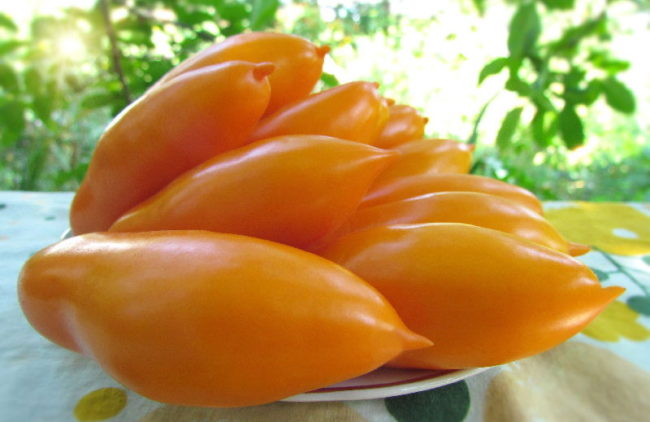
- Palmyra. Early, indeterminant. Pros - keeping quality (up to 10 weeks), transportability, productivity, very good taste. Cons - variety is permissible to grow only under the shelter. Fruits are flat-rounded, orange to 100 g.
- Shedi lady. Early ripe determinant hybrid. The fruits are very tasty, round, dense, red from 150 to 180 g, stored a little more than 2, 5 months. There are no downsides, advantages - yield, resistance to heat and such diseases as verticillis, fusarium, TMV, cladosporia.
- Wintry Late, indeterminant hybrid. Fruits are round, dense, red, lie up to 2 months. Pros - yield, excellent, rich taste, resistance to cracking, typical for culture diseases and pests. Cons - shelf life is reduced, if the summer was rainy.
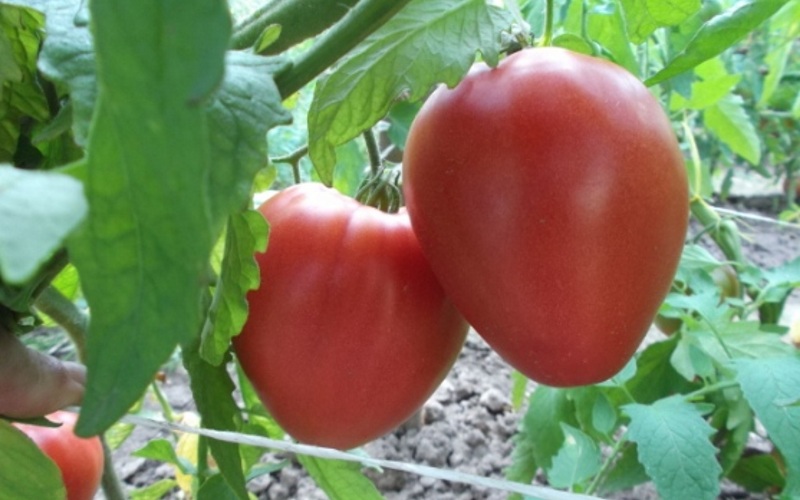
- Decembrist. Mid-season, indeterminantny hybrid. Fruits are round, dense, red from 100 to 150 g. Disadvantages of the variety - the need for frequent watering, it will not be possible to harvest seeds from a hybrid, a thermophilic plant, demanding for good light. Pros - yield up to 17 kg / m², keeping quality up to 12 weeks, excellent taste and product characteristics.
- Madame Courage. Early, indeterminantny hybrid. Fruits are rounded from 120 to 150 g, dark pink. Productivity to 19 kg / m ². There are no minuses in the variety, from the pros - the shelf life is up to 2 months, resistance to cladosporia. When ripe, the taste improves.
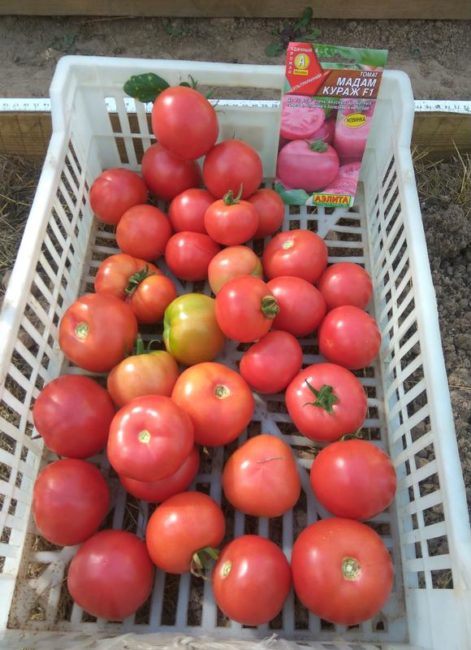
For long-term storage, it is better to plant tomatoes with an average and late ripening period or indeterminate ones, bearing fruit until the first autumn frosts.
Finally, we will give a few more recommendations on how long to keep fresh tomatoes. It is possible to lay in the boxes fruit picked from healthy bushes, without any technical damage. Copies even with small scratches or stains will quickly rot, and the neighboring fruits will deteriorate. Do not remove the peduncle if it is firmly held, otherwise you can injure the fruit. Observing the rules for choosing a variety, picking and creating optimal storage conditions, it will be possible to preserve tomatoes until February, and sometimes until March, while they practically will not lose their taste.


